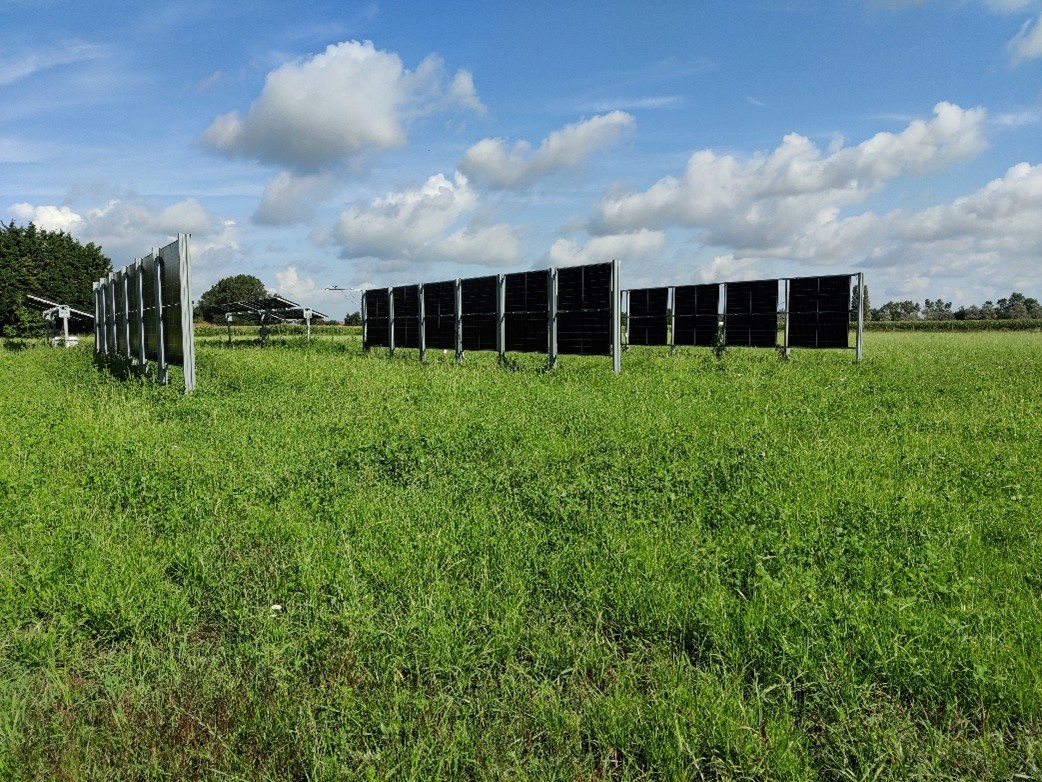
Besides the Plug-in PV [PiPV] design specificiations for a decentralised energy system, the demonstration operations conducted by SOLMATE researchers expand across two other use cases. The viability of the circular solutions for a decentralised energy system using second-life PV panels and batteries will be tested in the agricultural setting of TransFARM. Researchers at KU Leuven are planning to showcase these technologies to PV installers, farmers and policymakers through demo days and guided visits.
The AgriPV demonstration operations are located at TransFARM, leveraging the university’s extensive experience in similar research projects, as well as its expertise in designing, constructing and validating agrivoltaics setups. The demonstrator will showcase these technologies to PV installers, farmers, and policymakers through demonstration days and visits.
Specifications of the AgriPV demo site propose two rows of back-to-back second-life solar modules, alongside two rows with new vertical bifacial modules. This setup will allow researchers to measure and compare the energy production in similar conditions. The disposition of the back-to-back second life PV panels needs to comply with the agricultural activities ongoing on the site, respecting specific spacing to accommodate agricultural vehicles and to avoid shading from crops.

Vertical agrivoltaics system in Grembergen, Belgium (KU Leuven)
Additionally, several PV modules from an existing elevated agrivoltaics system will be replaced with second-life modules to compare performance.
The setup will be combined with a Battery Energy Storage System (BESS) using second-life batteries from hybrid buses, housed in a dedicated container for safety considerations. The Energy Management System (EMS), developed with Revolta, aims to provide better control, optimise self-consumption, electricity costs and participation in the imbalance market.
The demonstrator is set to serve as an example of integrating PV and battery installations on a farming facility. However, the current setup’s size does not match Transfarm’s total electricity consumption. Instead, it will focus on specific stables’ consumption, controlled by submeters.
Finally, despite a significant delay caused by the submission of the environmental permit for the vertical agrivoltaics setup, the design and construction of the battery storage system using second-life batteries are well advanced, due to the availability of the components in house. The vertical agrivoltaics setup, incorporating both new and second-life modules, will be developed this year, after consulting companies with expertise in agrivoltaics systems.
© visual: KU Leuven | TransFARM
